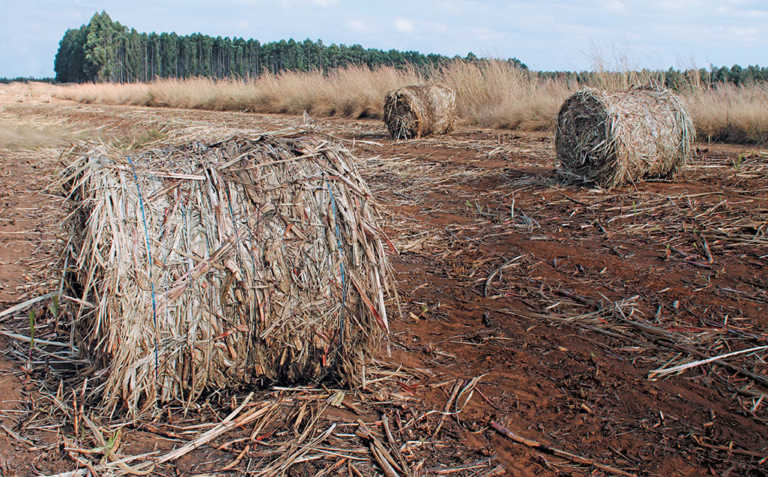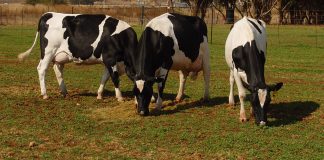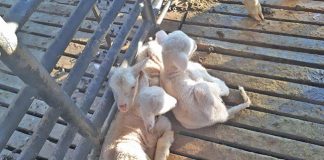
Photo: Lloyd Phillips
Research by the US-based Carbon Dioxide Information Analysis Center has revealed that most of Earth’s land-based, and currently underused, biomass is found in the southern hemisphere.
While the potential usage of this biomass has enormous economic advantages, appropriate scientific developments are required to allow this to occur efficiently, cost-effectively and, most importantly, sustainably.
According to Prof Annegret Stark, who leads the Sugar Milling Research Institute’s sugar cane biorefinery research group at the University of KwaZulu-Natal, the global biomass analysis did not take into consideration virgin forests and other conservation areas that were not available for utilisation.
“Instead, the focus is on biomass waste, as well as predominantly existing agricultural lands where biomass production and utilisation can be intensified.”
Biorefining
Stark stresses that biorefining, a process that sustainably converts accessible biomass, such as agricultural and household waste, to energy and higher value products, can add significant value to conventional agricultural production.
Farmers could generate additional income from introducing biorefining into their value chains, and sustainably produce new products for consumers.
Conventional fossil-based refining focuses on using coal, oil and natural gas to produce fuels, energy, chemicals and materials. This depletes non-renewable resources and creates much of the emissions contributing to climate change.
While producing renewable energy from sunlight and wind is fast gaining traction, Stark believes that modern biorefining should focus only partly on generating renewable energy and fuels such as ethanol and biodiesel. Increasingly, it should be used to manufacture chemicals and materials essential for modern living.
Increasingly, it should be used to manufacture chemicals and materials essential for modern living.
Biorefining already produces biochemicals to manufacture renewable fabrics, fertilisers and other agricultural chemicals.
“Ideally, in an integrated biorefinery, we don’t want to use fossil fuels to provide energy for the processes. In order to achieve our sustainability goals, it’s essential that we utilise renewable and clean energy sources for these processes.
This means that we don’t want to burn biomass for energy production, because it is a waste of its potential, but rather provide energy using solar or wind.”
Developing value chains
While biorefining makes ethical and environmental sense, Stark says that it also makes economic sense, especially as fossil resource prices increase. Farmers can sell crop residues or animal waste for biorefining to increase their incomes.
There are also benefits, such as reducing fossil resource use, and sending less waste to landfills.
Especially relevant to entrepreneurial development in South Africa, there is the opportunity to develop new value chains and product markets, promote energy security, provide more high-quality jobs, strengthen the agricultural sector, and develop a resource-efficient society.
“The biorefinery processes are designed so that any waste – I prefer to call it residues – is non-toxic, and might even be reapplied as nutrients to the soil that is being used to produce food, fibre and excess biomass,” Stark points out.
“What is currently considered as one person’s waste could be considered another person’s resource. This is what we refer to as the circular economy.”
Along with her colleagues, Stark is already considering options for the development of a comprehensive biorefining value chain in the country’s long-established sugar industry.
Stark aims to bring together key players from sugar cane farming, harvesting and transport, biomass processing and conversion, processed products, and markets for these products.
For example, farms produce sugar cane that is transported to mills to produce traditional products, such as sugar and molasses.
Bagasse, a by-product of the sugar milling process, is commonly burned as fuel for providing steam and electricity.
However, there is an excess of bagasse that can be used to produce various biochemicals, which are then converted to products for consumers’ daily use. Existing examples are furfural and ethanol, which serve as industrial intermediates, solvents and fuels.
The effluent from ethanol production can be brought back to crop fields and used as fertiliser.
“If we could provide the energy for the milling and downstream operations through solar or wind energy, this would free up even more bagasse. Together with the residues from other agricultural sectors, a huge potential exists to generate various products to serve both national and international markets,” she says.
Challenges
Biomass generally has a relatively low density of energy and beneficial biochemicals. It also has a high moisture content, and is often dispersed in rural areas far from biorefining facilities. This means that large quantities of it must be transported long distances.
This means that large quantities of it must be transported long distances.
“South Africa often doesn’t have good transport infrastructure in its rural areas for this purpose,” Stark explains.
“The benefits of economies of scale for production facilities can also be undermined by the transport costs of generally low-value primary biomass. Furthermore, South Africa’s technological levels of readiness for biorefining are not yet optimal, and the technology that is available elsewhere in the world is often protected by expensive intellectual property rights.”
She adds that South Africa also currently lacks substantial intermediate biochemical-converting industries that manufacture final products for consumers.
In addition, there are socio-economic challenges for a potential biorefining value chain in South Africa. Some people are averse to the biorefining concept because they fear it will threaten national food security by diverting food crops to biorefining stocks.
Stark says, however, that biorefining uses the residues of food production and not the food itself. Other useful residues are generated in the wood, forestry, and fishery sectors, and household and garden refuse can also be included. In certain areas, fallow land may be used to grow specialised biorefinery crops.
Additionally, concerns regarding the environmental effects of intensive farming, in particular monocropping and water management, need to be taken in consideration.
Finally, limited financial and human resources may stand in the way, and enabling government policies are crucial to overcome the challenges.
“We want to ensure that South Africans can be uplifted by becoming economically involved in biorefining value chains, but we need to create sustainable market opportunities for this to happen,” says Stark.
“For this reason, we conduct holistic studies to look into the effects that biorefinery activities will have on society, economics and the environment.
Whilst there is a national bioeconomy strategy, pressure on government coffers has prevented the implementation of this strategy becoming a reality in South Africa.
Government decision-making on biorefining and renewable energy is required to encourage the necessary private sector investment.”
Email Prof Annegret Stark at [email protected]. This presentation was given at the Ukulinga Howard Davis Memorial Symposium held from 23 to 24 May at the University of KwaZulu-Natal’s Ukulinga Research Farm in Pietermaritzburg.











